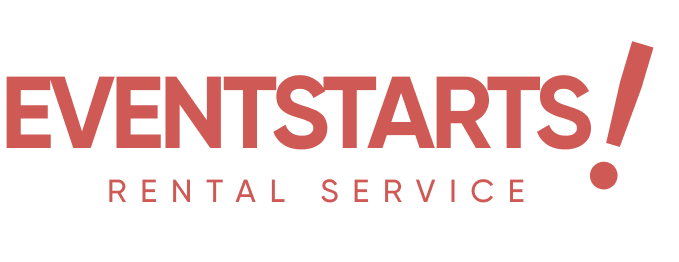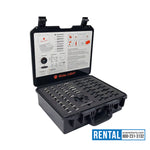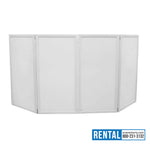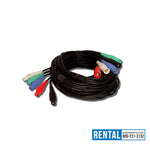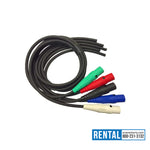You have no items in your shopping cart.
How Moving Head Lights Revolutionize Stage Shows
Live entertainment events can be greatly transformed by an exciting light display. Although sound and visuals matter a lot, moving lights enhance the atmosphere and increase the event’s emotional effect. At the center of this revolution are Moving Head Lights, intelligent lighting fixtures that have transformed the way we experience concerts, festivals, and theatrical performances.
From their precise motion and programmable flexibility to the creative freedom they offer designers, Moving Head Lights are not just tools — they are essential storytelling instruments. In this article, we will look at the strength of these lights, how they operate, the kinds that are available, and how they are being used to revamp stage shows these days.
What Are Moving Head Lights?
Moving Head Lights are motorized lighting fixtures that can pan, tilt, and change color or beam shape. They can be moved in different ways to produce beautiful moving patterns and light effects all around the venue and on the audience.
Since they can respond to music or instructions, follow given routes, and change in real time, they are well suited to complex light performances with lots of motion and timed effects. Because these lights are controlled by DMX, they completely free lighting designers to explore new ideas.
Briefly, Fabian explains what intelligent lighting is and how it is used.
The first appearance of intelligent lighting came in the 1980s, during rock concerts and theatrical shows with electronic features. At first, they were clumsy and lacked lots of features, until digital technology made them improve fast.
When microprocessors and DMX control systems improved, the features of moving lights also improved. Today’s Moving Head Lights feature LED engines, quiet operation, high-speed motors, and even wireless control, making them a standard in modern stagecraft.
Types of Moving Head Lights
Those who use lighting know that each light type in a moving head set has its own function.
Spot Fixtures
Spot lights let you highlight performers or project clean patterns through the use of gobo stencils. Most of the time, they offer tools such as zoom, shutters, and color wheels.
Beam Fixtures
Compared to most other lights, beam moving heads make bright and intense rays that stand out easily in fog or haze. Many concerts and festivals use them to create exciting lighting effects in the air.
Wash Fixtures
Wash lights spread wide beams of light that help to color big sections of the stage. Such sounds help to set the right mood for a scene.
Hybrid Fixtures
Spot, beam, and wash abilities are all included in one single fixture. Although they cost more, they make the stage need fewer different lights.
How Moving Head Lights Work
Each moving head includes many parts.
These motors help the head move in all horizontal and vertical directions.
RGB, CMY, and Color Wheels are examples of color mixing systems for the webs.
Reusable discs that let you project different sorts of designs and images
With these lenses, the beam’s width can be changed.
Shutters help in lowering the intensity of light and changing strobe settings.
Everything is regulated by using a DMX console or special software for exact, step-by-step operation.
How stage production is better
Why have Moving Head Lights become a staple in professional lighting rigs? Here are some great arguments support this statement.
1. Creative Versatility
No matter if you want aerial effects, a single dancer lit up, or sudden changes from comforting lighting to bright strobes, moving heads fit all your needs.
2. Efficient Rigging
You don’t need to install so many single lights; moving lights rotate and change their color or effect as the program goes on, so it takes less time and fewer equipment to set up.
3. Real-Time Control
Thanks to DMX, operators can direct all the changes in mood, color, and movement to music, video, and the performance on stage.
4. Space Optimization
Mobile lights are good for venues that need to cover a large space with a minimal amount of lights.
Using moving head lights to create programs for shows
A major reason why these fixtures are useful is that they can be programmed. Designers may use consoles like the MA grandMA or Avolites for DMX control to fully arrange the light shows.
Programming includes:
Cue stacking means planning the changes in lighting in a sequence.
The fast rhythmic chase sequences give drama to the score.
All the defined positions or effects are known as palettes.
Timecode synchronizes the video and the corresponding audio or soundtrack.
Things are consistent night after night since the programming is accurate and does not change.
It works with wedding events as well as others.
Moving heads also work well at small venues, not only during arena shows. Being able to adjust to different events is what makes them valuable.
Music festivals and concerts
Employed to enhance the parts where the band drops, plays solos, or is crowd-pleasing. The moving heads aim laser beams upwards, move around to make things lively during the intro, or chase the artists performing.
Theater and Opera
Let your choreography change the mood by moving gracefully or making certain moments more dramatic. Quiet guitars are preferred when playing on stage to lower the volume of noise.
Corporate Events
Held during product launches, during corporate speeches, and at gala dinners to provide extra excitement. The graceful, smart movement shows that the watch is contemporary and elegant.
Events can also be for weddings or for private parties.
With rental moving heads, the club atmosphere appears on dance floors, following the beats of the music or set up for special dances or entrances.
How Moving Head Technology Might Develop
These fixtures keep getting updated with new solutions. The next item is important to consider:
Laser source lighting produces brighter results and uses less energy than LEDs.
Because of AI, setting up is easier and faster through presets.
Wireless DMX control gives more freedom when using equipment outdoors.
Smooth and quite designs: Set up easily and do not interfere a lot.
Since people want more exciting events today, dynamic lighting is gaining importance.
Guidelines for Making the Most Out of Moving Heads
Place your focus at different levels and viewpoints to stop your work from feeling repetitive
Think about why you are moving; only use physical exercises that matter
A haze or fog effect makes any beams stand out.
Use all kinds of light fixtures, such as spots, washes, and beams, to have a wide range of colors.
Make sure the weight you put on the racks can’t exceed the racks’ limits
Points to think about when deciding on renting or installing an air conditioner
There are venues that do not own the lighting equipment. A lot of people prefer to use rental companies to get their gear and arrange everything for them. When renting:
Your fixtures should match the style of controls used.
Make sure the number of DMX channels and their compatibility are right for your lights.
Take into account the way supplies will be moved, lifted, and looked after on-site
Make sure to do a test before presenting to the audience
Keep ventilation, maintenance, and sound in mind if you are setting up an installation on a permanent basis.
Conclusion
Few technologies have impacted live entertainment as dramatically as Moving Head Lights. Thanks to how they use color, motion, texture, and timing, they are very effective in affecting the audience. Since these intelligent lights give ultimate flexibility and can be visually exciting, they are perfect for festivals, corporate gatherings, or stage productions.
If you are looking for rental equipment, professional lighting people, or special packages for your next occasion, go to EventStarts.com. Allow us to change the atmosphere of your stage with stunning and inspiring lights.
